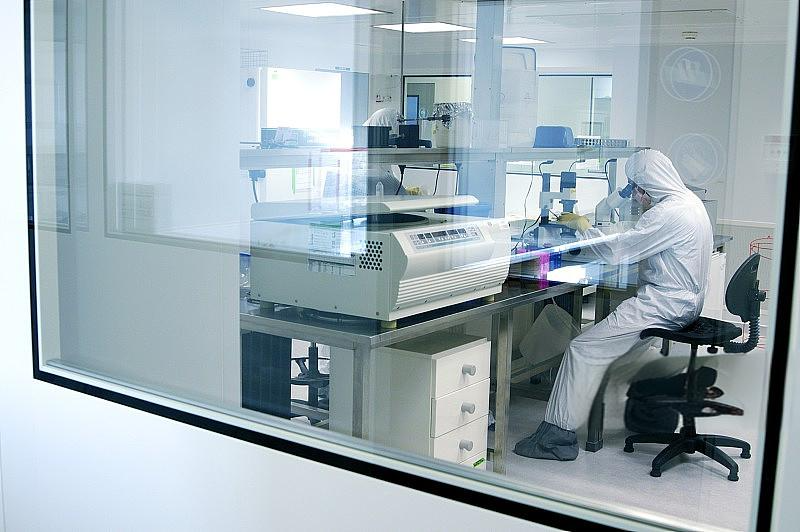
The evolutionary essence of wet wipe liquid preparation
Understanding the problem of microbial growth: In the early days, it was discovered that the large amount of moisture and cellulose matrix in wet wipes provide an ideal growth environment for microorganisms, easily leading to the proliferation of bacteria, fungi, and other microbes. This not only affects the appearance, odor, and texture of wet wipes but may also pose a threat to users' health.
Development of new chemical preservatives: With the deepening of research, more types of chemical preservatives have been developed, such as isothiazolinones (for example CMIT/MIT, namely the "Kathon" series preservatives). These preservatives have characteristics such as broad-spectrum antibacterial properties, effectiveness at low concentrations, and good stability, which can more effectively inhibit the growth of various bacteria and fungi. However, at the same time, some preservatives have been found to have certain safety hazards. For example, CMIT/MIT may cause skin allergies and other issues, which has attracted attention.
Application of compound preservatives: In order to improve the anti-corrosion effect and reduce the dosage of single preservatives and their potential risks, research began on compounding different preservatives. By reasonably selecting and matching preservatives with different action mechanisms, a synergistic effect is achieved, which can not only enhance the anti-corrosion and bactericidal performance but also reduce the dosage of each preservative, thereby minimizing harm to the human body and the environment. For example, compounding preservatives with different antimicrobial spectra enables wet wipes to effectively inhibit the growth of multiple types of microorganisms.
wet wipes solution preservation: The combination of phenoxyethanol and chlorphenesin can enhance the inhibition of Gram-negative bacteria, while reducing the dosage requirement of phenoxyethanol (from 1000mg/kg to below 500mg/kg).
Wet wipe liquid preservation: Quaternary ammonium salt complexes (such as JKBIO-6610) achieve broad-spectrum antibacterial effects by disrupting microbial cell membranes and interfering with DNA synthesis, with no risk of formaldehyde release.
Compound preservatives significantly enhance bacteriostatic effects through synergistic effects while reducing the dosage and risks of single components. In the wet wipe industry, compound formulations have successfully addressed the issues of odor, irritation, and stability associated with traditional preservatives, such as the ε-polylysine compound system and Sabodet® CCP6. Future research directions include the development of natural ingredient compounds, optimization of nano-encapsulation technologies (such as natamycin micro-nano emulsions), and precision compound design based on microbiomics. This strategy is not only applicable to wet wipes but can also be extended to food, cosmetics, and other fields, providing a new paradigm for safe and efficient preservation systems.
For example, one of the compound wet wipe preservatives produced by our factory is mainly composed of a blend of caprylohydroxamic acid, chlorphenesin, 1,2-hexanediol, and phenoxyethanol. It exhibits excellent compatibility, being able to mix with various ionic and non-ionic surfactants and other ingredients, and also has good dispersibility in pure water systems. Caprylohydroxamic acid is an important green preservative belonging to organic acids, while chlorphenesin is a broad-spectrum cosmetic preservative—both can inhibit mold growth. The compound system produces a synergistic effect, effectively suppressing various microorganisms at low dosages, including Escherichia coli, Staphylococcus aureus, Pseudomonas aeruginosa, Aspergillus niger, Candida albicans, and other bacteria, molds, and yeasts. It is an ideal safe, mild green preservative and mildew inhibitor.
It can not only meet the requirements of wet wipes with high demands for formula mildness. It has a wide applicable pH range and can be used at pH 2.0-10.0; the use temperature is less than 80°C. It does not contain controversial components such as Kathon, parabens, and formaldehyde releasers, is safe and mild, and causes low skin irritation. At the use concentration, it is miscible with water and has good compatibility with various emulsifiers, surfactants, and protein components.
In the future, with the deep integration of interdisciplinary technologies, wet wipe liquids will no longer be confined to "disposable cleaning carriers," but will evolve into intelligent functional carriers integrating "bacteriostasis, skin care, and environmental friendliness," redefining the boundaries of hygiene and care scenarios.






 English
English
 USA
USA
 西班牙语
西班牙语
 俄罗斯
俄罗斯
 葡萄牙
葡萄牙
 印尼
印尼
 巴基斯坦
巴基斯坦
 尼日利亚
尼日利亚
 孟加拉
孟加拉
 墨西哥
墨西哥
 越南
越南
 日本
日本
 韩国
韩国

